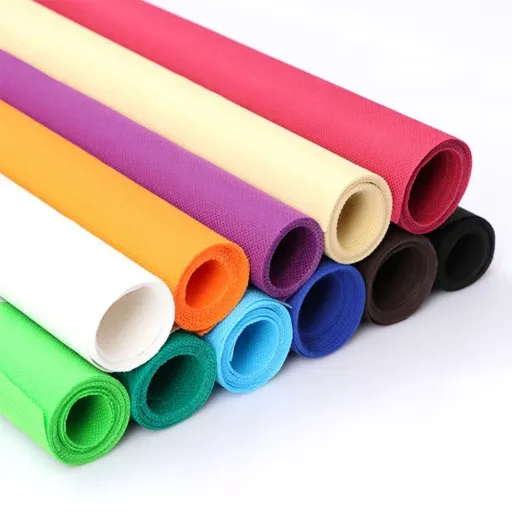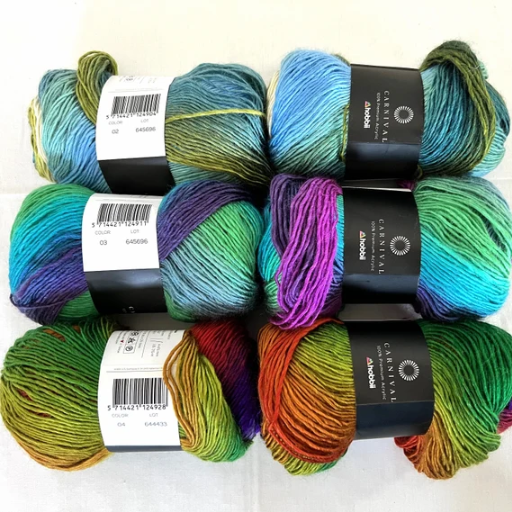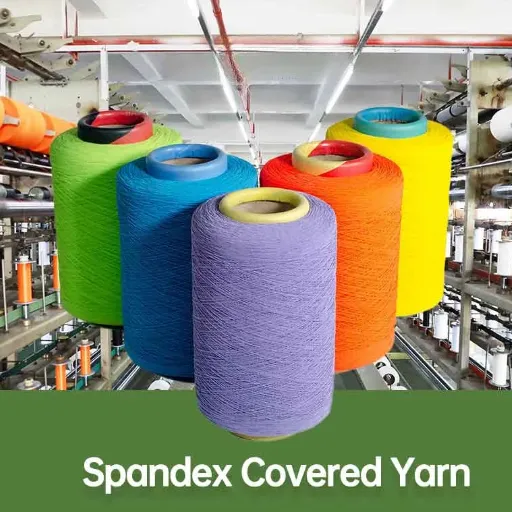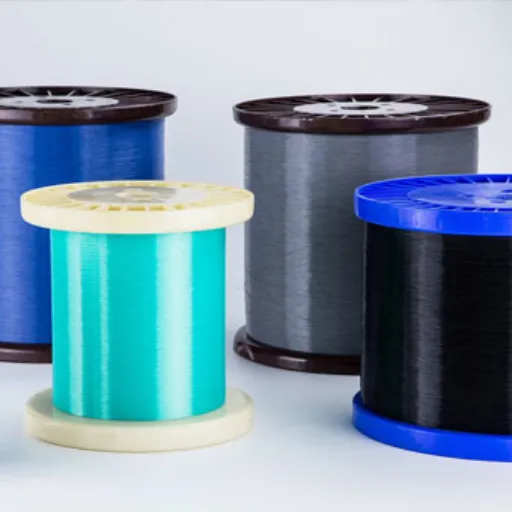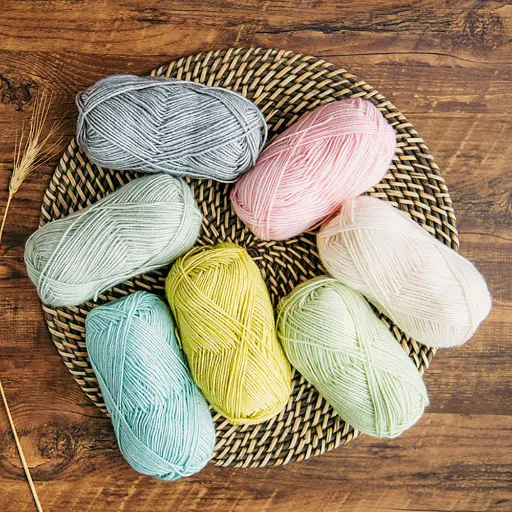Although polyester is one of the most popular and widely used fabrics in manufacturing various products, a large number of people remain unaware of its origins, composition, or impact. Polyester is very important in everyday activities, making it not only for clothing but also for upholstery, bags, and other industrial items. Why is this fabric so fond among the masses, and how does it operate? Admission to this blog offers enlightenment, providing a comprehensive overview of the entire history, from the polymer known as polyester’s invention and application to its various uses and effects. If you are interested in multiple eco-friendly topics or simply the types of products that users consume, then don’t hesitate to read this, as it will provide answers to your many questions about the role of polyester in fashion, technology, and beyond.
What Makes Polyester Fabric a Popular Choice?
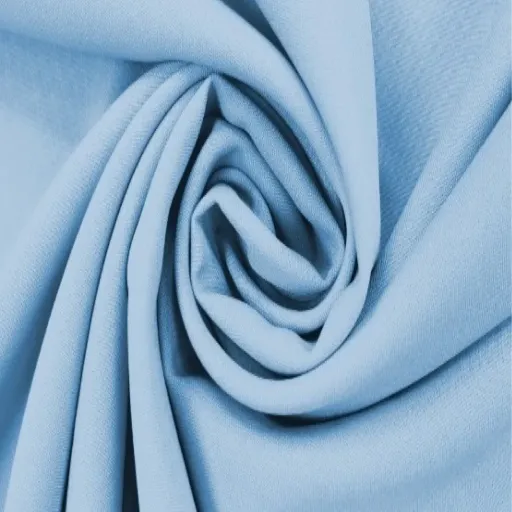
One of the reasons polyester fabric is commonly used is that it is long-lasting, versatile, and cost-effective. Polyester fabric does not wrinkle, shrink, or fade, thus it is easy and convenient to maintain and use daily. Furthermore, this synthetic fabric is portable and does not cling to surfaces, making it more usable in garments, sportswear, and household linens. Moreover, combining it with other types of fibers enhances its efficiency and productivity, making it a standard material employed in several fields. Such features and benefits are some of the reasons why polyester is undoubtedly a standard and dependable fabric.
Characteristics of Polyester Fibres
Because the polyester fibers are very tough and strong, they are used for the production of many goods. The goods do not stretch, shrink, or wear out, which promotes the longevity of the shape and appearance of any products made from polyester. Moreover, the fact that polyester is hydrophobic, meaning it does not absorb water, but instead dries quickly, makes it superb for any outdoor athletic clothing that features such a design. Additionally, these fibers exhibit excellent colorfastness, retaining their color even after multiple washing cycles or exposure to sunlight. Additionally, the polyester variation allows for the easy integration of more fibers, such as cotton, for enhanced comfort and functionality. These aspects have made the usage of polyester materials in fashion, upholstery, and various other industries prevalent.
Types of Polyester Fabric and Their Uses
There are different forms of polyester fabrics, tailored for various types of work performances according to their characteristics.
PET (Polyethylene Terephthalate)
The most prevalent among the polyesters, this particular type is commonly used in apparel, beddings, and furniture. Its strength, non-wrinkling, and moisture-absorbing features make it one of the most preferred materials for sports and casual wear.
PCDT (Poly-1,4-Cyclohexylene-Dimethylene Terephthalate)
Although less common than PET, this version is more elastic and complex, making it suitable for long-lasting use in specific applications, such as draperies and covers.
Recycled Polyester (rPET)
As the name implies, this is a recycled plastic bottle and plastic waste remixed product that is being widely adopted for its advantages. Industries have exploited its uses, ranging from clothing fashion to wild environments, in an environmentally friendly manner, as no blockages to such production occur.
Microfiber Polyester
Lightweight, soft, and highly absorbent, this ultra-fine fabric is widely used in the production of cleaning cloths, upholstery, and sportswear, among other applications, due to its comfort and versatile range of uses.
Blended Polyester
In combination with natural materials such as cotton or wool, polyester enhances the ventilating ability, while also providing comfort and the longevity of the garments. Such mixing is considered to be most suitable for casual clothes, official outfits, and home wear.
The Environmental Impact of Polyester
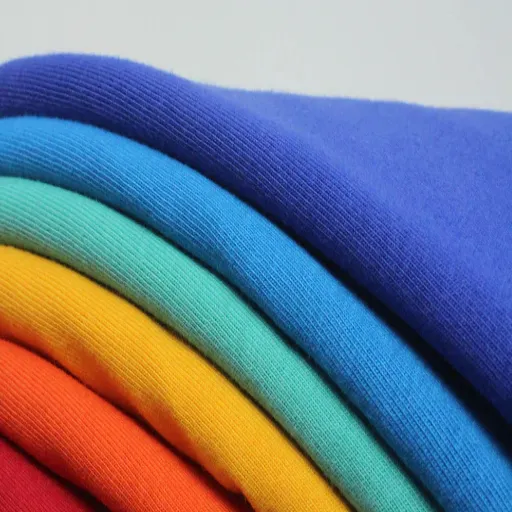
Environmental Concerns
It is essential to recognize the significant environmental impact of polyester production and disposal. This material comes from a non-renewable resource: petroleum. The clothes follow a manufacturing process that results in the emission of greenhouse gases, thereby contributing to global warming. Furthermore, polyester is not biodegradable, so it will take decades to several hundred years to fully break down; as such, this waste usually fills landfills or is released into the ecosystem. Washing polyester clothing releases microplastic fibers into the water systems, which can harm or kill sea creatures. Once again, efforts are underway to recover polyester and explore new sustainable options; however, the prevalence of this material remains a bottleneck in achieving environmental sustainability.
Polyester’s Connection to Petroleum and Its Carbon Footprint
As a polycloth is mainly produced from oil, a resource which cannot be replenished, it means that this fabric is attributed to the extraction of fossil fuels. For instance, another feature inherent to the production of this fabric is an elevated level of energy optimization – immense amounts of energy are used, which smartly indicates a higher level of carbon emissions. Moreover, given that recent data show that polyester accounts for 52% of the global market share and is highly detrimental to the environment, especially in the fashion sector, this should not come as a surprise. The extensive use of energy for production is complemented by the senseless devastation of crude oil reserves, which further highlights the significant role that polyester plays in contributing to global warming. Measures such as reducing the use of polystyrene by emphasizing the use of secondary fibers and emerging multi-material polymer systems can help mitigate these negative consequences.
Challenges in Recycling Polyester Fabrics
A versatile structure that favors mixing and in which the lining of, for example, cotton with polyester, which is found in all blended textiles, makes recycling difficult. Moreover, those types of teased fabrics require additional time and technologies to separate them, especially before recycling. Again, the chemical recycling process for polyester may involve energy-intensive processes that could actually offset some of these advantages. Another source of contamination is the dyes, coatings, and other treatments that are used, which lower both the quality and efficiency of the recycled polyester. Despite the emergence of new forms of chemical recycling, their adoption has been limited due to a lack of economic and social acceptance. It can only be enabled for the fashion business to reach the general population for man-made fiber recycling, where people should invest their money to fund research, establish clear systems for waste, and continue to address the world’s united challenges.
Innovations in Polyester Production
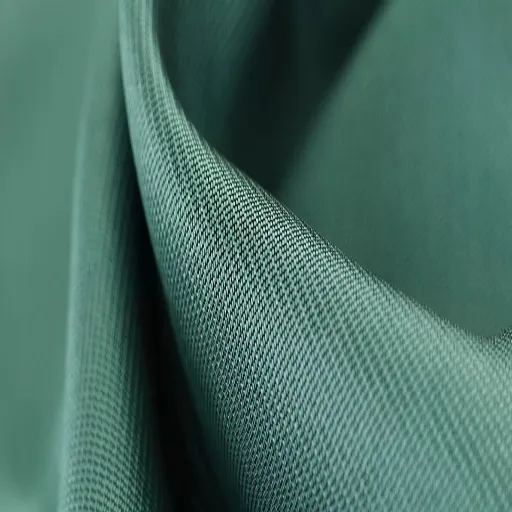
Technological Advances
In response to the negative environmental repercussions of traditional polyester manufacturing, significant improvements have been made in polyester fabrication. A major improvement in this context is the utilisation of bio-polyester, which uses sugarcane or corn in place of petroleum-derived sources. Additional advances include more efficient closed-loop recycling systems that enable the breakdown and reuse of polyester with minimal waste generation. Furthermore, improved purification methods have enabled the recycling of polyester to a high standard, making it a viable alternative to primary fibres. Such advancements can reduce the ecological impact caused by polyester and enhance the inclusiveness and sustainability of the twice-only used fashion.
Bio-Based Polyester: A Sustainable Alternative?
The advent of bio-based polyester brings a beacon of hope in solving the menace posed by polyester derived from petrochemicals. Essentially deriving from resources that can be renewed, especially sugarcane, corn, or any other materials from plant sources, bio-based polyester proves to have less environmental degradation with respect to the fossil fuel-based polyester. This, however, is partially misleading, as recent research has shown that the energy costs of producing those bio-alternatives are still generally high and that they are becoming feasible only due to advancements in green chemistry and the growth of renewable raw materials. A noteworthy move towards making the textile industry more eco-friendly could be transitioning from fossil-based polyester to bio-based polyester, particularly when facilitated by recycling in a closed-loop system. Nonetheless, for it to reach its maximum potential, challenges such as scaling up, production economics, and food-crop competition for the resources used need to be overcome.
Advances in Recycling Technology for Polyester Fibres
Breakthroughs in the present recycling sphere facilitate the policy of closed-loop polyester systems. That means the sphere became more adapted for recycling polyester fibers and products. Thus, such methods as chemical recycling, e.g., depolymerization, presuppose the possibilities of polyester being disassembled into its monomers, where there is a possibility of reconstructing anew by polymerizing them to the extent that the reclaimed fibers painted by it are identical to the painting which is used on the type of polyester to start with. Alternative recycling methods, such as mechanical ones, have also been upgraded to minimize the decline in fiber quality. In addition, progress in cutting-edge technologies and purification comes in various forms, such as machines that perform sorting and cleaning, as well as sophisticated filtration processes, which help preserve the polyester when it is part of a multi-fiber textile. This means the eco-friendly intervention is timely enough to develop inventive strategies for the production, consumption, and recycling of polyester.
Polyester in Fashion and Textiles

Durable, affordable, and versatile are the primary features that make polyester a valuable material in the fashion and textile industries. In most clothes, natural fibers, especially cotton, are often mixed with synthetic fibers to increase strength while enhancing the fabric and diminishing wrinkles. Polyester dries very rapidly and retains bright colors very well, and that is why it is most suitable for making active and sports wear. On the contrary, it has a more significant impact on the environment because it is made from crude oil and is not biodegradable. Attempts to resolve the above problems are, however, in progress, involving the utilization of recycled polyester in these products and progress toward achieving more sustainable production.
Why Polyester is a Fashion Favorite
All over the world, polyester, more than any other material, is the most preferred because of its dual character of being cheap and very useful. Recent findings from some search engines list polyester among the fabrics most frequently searched for due to its flexible nature. Due to its resistance to shrinkage, stretch, and wrinkling, it is a reliable choice for clothing materials that require strength and longevity. Additionally, the manufacture of polyester is less expensive than that of natural textile materials, a common practice among many consumers and producers. Because it can be combined with others, made into a lightweight material, and hold deep colors, it is still a staple in the current fashion industry. Nevertheless, a growing awareness of adverse effects is leading to an increased adoption of recycled forms of polyester, reflecting the emergence of contemporary eco-friendly trends in the fashion industry.
Luxury Meets Polyester: High-End Applications
Polyester, which most individuals typically associate with low prices, is also entering the high-end segment due to improvements in the manufacturing process of this material. The current technology of polyesters present in the market is capable of rivaling the touch and appearance of natural fibers like silk and cashmere, hence making some top designers embrace these fabrics. Polyester is a material that, when blended with other materials, makes it highly suitable for the luxury sector, as it is durable, highly functional, and can be used to design beautiful products. Moreover, with customers increasingly receptive to environmentally friendly brands, more designers are coming to believe in the importance of using recycled polyester materials and fabrics that incorporate sustainable technologies, such as bio-polyester. In essence, the fusion of technology and environmental responsibility creates new horizons in fashion, utilizing polyester in forms and ways previously unimaginable.
Caring for Polyester: Tips and Tricks
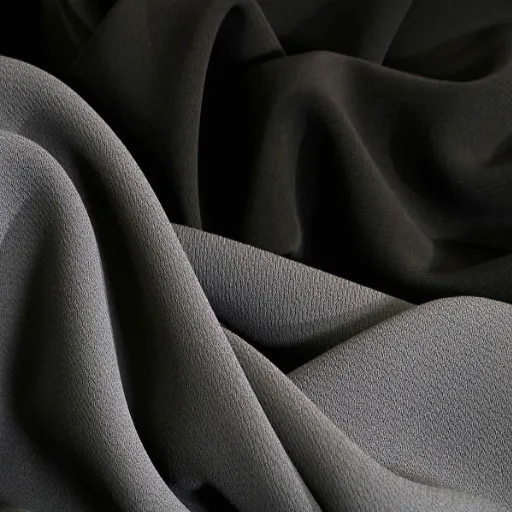
To maintain the quality of polyester fabric with proper care, you can follow these guidelines:
- Washing: polyester fabric can be processed in a washing machine. You can choose slightly warm water and mild soap. Do not wash at a high temperature to avoid deformation.
- Drying: The instructions allow for tumble drying on low heat or the option of line drying. This is because polyester tends to dry quickly, and excess heat should be avoided to minimize shrinking or excessive creasing.
- Ironing: Where there is a need for ironing, only press the surface using low heat. Position a wet piece of cloth between the surface and the hot bottom of the iron to safeguard it from burning.
- Stain Removal: Use mild, non-harmful stain removers and ensure the stain is removed within a reasonable timeframe. It is always better to dab a stain than to rub it, as the cloth could get torn and spoiled.
- Storage: Polyester and similar fabrics should be stored in a dry, calm environment to prevent creasing and prolong their lifespan.
How to Remove Stains from Polyester
When eliminating stains from polyester, I first begin by blotting the stain with a clean cloth to remove any remaining residue. Next, I use my fingers or a soft brush to apply a stain remover or a small amount of detergent and rub it directly against the stained fibers. Afterwards, I soak the fabric under lukewarm water and repeat the steps until necessary. I ensure the stain is removed, and I have washed the item according to the care instructions before drying the garment.
Pro Tips for Keeping Polyester Looking New
- Wash with Similar Fabrics: To prevent pulling or fuzzing, polyesters should be washed only with other types of polyester or synthetics, and a gentle wash cycle should be used.
- Turn Garments Inside Out: To minimize wear and tear on polyester clothing, place the garments inside out before washing.
- Use Cold Water: Utilizing cold water when doing laundry helps protect the color and softness of polyester, as heat can cause the fabric to wrinkle or lose its silkiness.
- Avoid Overloading the Washer: Adding extra garments can cause increased wear and tear on your clothes. It is always, however, imperative to provide adequate space for the clothes to stir.
- Skip the Bleach: Synthetic materials do not respond well to bleach and can also cause stains on your clothes. Alternatively, oxygen-based Enzymes are also capable of removing stains when necessary.
Reference Sources
To confirm the validity of this article, there are five trustworthy and credible sources of information about polyester that are available for the reader to refer to. The sources are all education-oriented and for research purposes only.
- Sustainability and Polyesters: Beyond Metals and Monomers to Function and Fate
Plastic Paper produced by the American A devoted article about why plastics in cosmetics should be sustainable rather than their production. - Polyester: A Cultural History
This article, published in Taylor and Francis Online, offers an analysis of the value and history of pure polyester. - Dressed in Plastic: The Persistence of Polyester Clothes
This publication is available from De Career. This Publication deals with turning Polyester fibres into fabric, and the polyester in fashion is still visible. - Polyesters and Polyamides
Exhaustive books, some of which are also available for download on the Web, allow us to reveal polyester’s properties, brand names, sphere of use, and more. - An Overview on Synthesis, Properties, and Applications of Poly (Butylene-Adipate-Co-Terephthalate)–PBAT
The synthesis and applications of co-polyesters, as well as new horizons in polyester technology, are presented in this Scientific report on ScienceDirect.
Frequently Asked Questions (FAQs)
What is polyester, and how is it made?
Polyester is a synthetic polymer made primarily from the reaction of terephthalic acid and ethylene glycol. This process, known as esterification, produces a compound that can be spun into yarn or filament, resulting in a durable fabric widely used in various applications, including clothing and home furnishings.
What are the mechanical properties of polyester?
Polyester is renowned for its exceptional strength and durability, making it an ideal choice for a wide range of textile applications. Its mechanical properties include resistance to stretching and shrinking, quick-drying capabilities, and excellent resilience, which helps maintain the shape of garments and furnishings over time.
How does polyester compare to nylon?
While both polyester and nylon are synthetic fibres, they differ in their chemical structure and properties. Polyester is typically more resistant to UV light and has better dimensional stability, while nylon offers greater elasticity and is often preferred for activewear. Both materials can be blended to enhance their respective characteristics.
Is polyester environmentally friendly?
Polyester can be produced from plant-based materials, making it a more sustainable alternative to traditional petroleum-based polyester. Additionally, recycled polyester, made from post-consumer plastic bottles, reduces waste and the reliance on virgin materials, thus contributing to a more sustainable textile industry.
What types of clothing are commonly made from polyester?
Polyester is commonly used in the production of shirts, pants, activewear, and home furnishings, including curtains and upholstery. Its versatility allows it to be blended with other fibres, including cotton, to create a variety of fabric textures and styles.
What are the advantages of using polyester in home furnishings?
Polyester is a popular choice for home furnishings due to its durability and ease of care. It resists stains and fading, making it ideal for use on items such as upholstery, drapes, and cushions. Furthermore, polyester can also be used as a cushioning material, enhancing comfort in furniture.
How is the dyeing process for polyester different from that of other fabrics?
The dyeing process for polyester requires specific dyes that can bond with the synthetic fibres. Disperse dyes are commonly used to achieve vibrant colors. At the same time, the dyeing process itself often requires higher temperatures compared to natural fabrics, such as cotton, which can be dyed using reactive dyes.
Can polyester be recycled?
Yes, polyester is a commodity plastic that can be recycled. The recycling process involves breaking down the polyester into its basic components, which can then be remade into new polyester products or fibres. This not only helps reduce waste but also conserves resources in the production of new materials.
What is the difference between polyester and polyamide?
Polyester and polyamide (commonly known as nylon) are both synthetic fibres but differ in chemical composition. Polyester is made from a dicarboxylic acid and a diol, whereas polyamide is made from amino acids. Each has unique properties that make it suitable for different applications in textiles and other industries.










